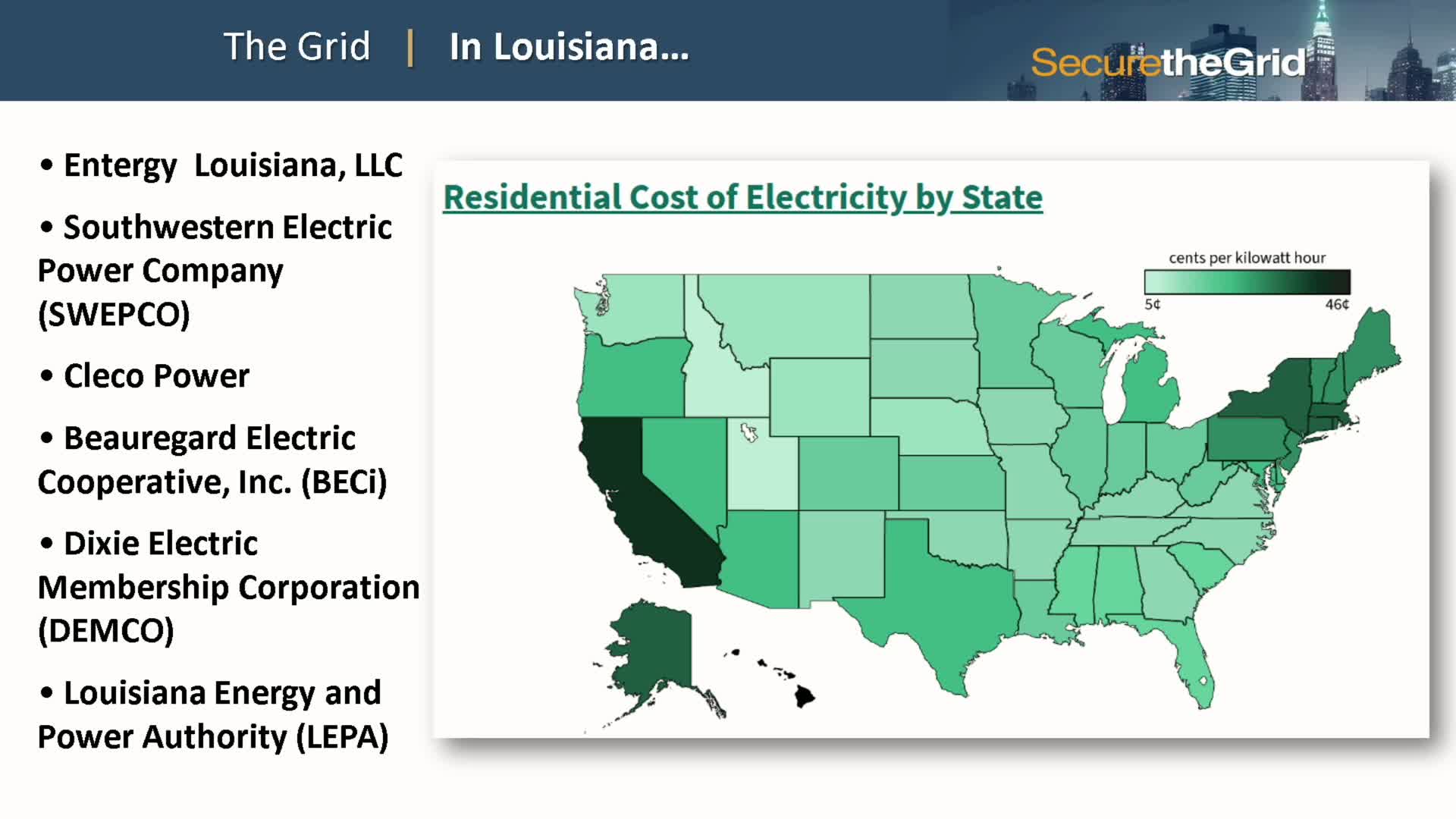Louisiana's connectivity to Eastern interconnection highlights grid complexities
May 22, 2025 | 2025 Legislature LA, Louisiana
This article was created by AI summarizing key points discussed. AI makes mistakes, so for full details and context, please refer to the video of the full meeting. Please report any errors so we can fix them. Report an error »

In a recent meeting of the Louisiana Legislature's House Homeland Security Committee, discussions turned to the complexities of the state's electrical grid, highlighting the intricate web of utilities and regulatory bodies that manage power distribution. As representatives gathered, the atmosphere was charged with the urgency of understanding how Louisiana's energy infrastructure operates within a broader national context.
One speaker emphasized the significance of the state's connection to the Eastern interconnection, a vast network that allows for the flow of electricity across state lines. This connection is facilitated by various regional transmission authorities and independent system operators, likened to air traffic controllers ensuring the smooth operation of power distribution. The Midcontinent Independent System Operator (MISO) was specifically mentioned as a key player in this system.
The discussion underscored the complexity of the grid, which encompasses everything from generation to transmission and distribution. The speaker noted that while Texas operates its own grid, Louisiana's integration into a larger network presents unique challenges and opportunities. "Electrons don't care about state boundaries," they remarked, highlighting the interconnected nature of energy resources and the importance of collaboration across regions.
As the meeting progressed, it became clear that understanding these dynamics is crucial for addressing future energy needs and ensuring reliable power for Louisiana residents. The dialogue not only shed light on the technical aspects of the grid but also hinted at the broader implications for energy policy and infrastructure development in the state. With the energy landscape continually evolving, the discussions at this meeting may pave the way for future initiatives aimed at enhancing Louisiana's energy resilience and sustainability.
One speaker emphasized the significance of the state's connection to the Eastern interconnection, a vast network that allows for the flow of electricity across state lines. This connection is facilitated by various regional transmission authorities and independent system operators, likened to air traffic controllers ensuring the smooth operation of power distribution. The Midcontinent Independent System Operator (MISO) was specifically mentioned as a key player in this system.
The discussion underscored the complexity of the grid, which encompasses everything from generation to transmission and distribution. The speaker noted that while Texas operates its own grid, Louisiana's integration into a larger network presents unique challenges and opportunities. "Electrons don't care about state boundaries," they remarked, highlighting the interconnected nature of energy resources and the importance of collaboration across regions.
As the meeting progressed, it became clear that understanding these dynamics is crucial for addressing future energy needs and ensuring reliable power for Louisiana residents. The dialogue not only shed light on the technical aspects of the grid but also hinted at the broader implications for energy policy and infrastructure development in the state. With the energy landscape continually evolving, the discussions at this meeting may pave the way for future initiatives aimed at enhancing Louisiana's energy resilience and sustainability.
View full meeting
This article is based on a recent meeting—watch the full video and explore the complete transcript for deeper insights into the discussion.
View full meeting
